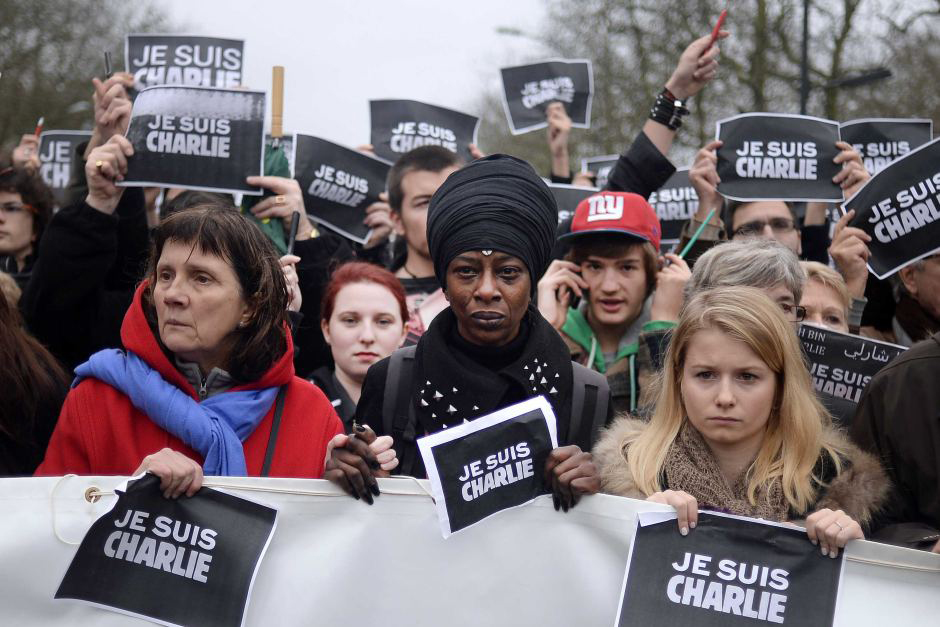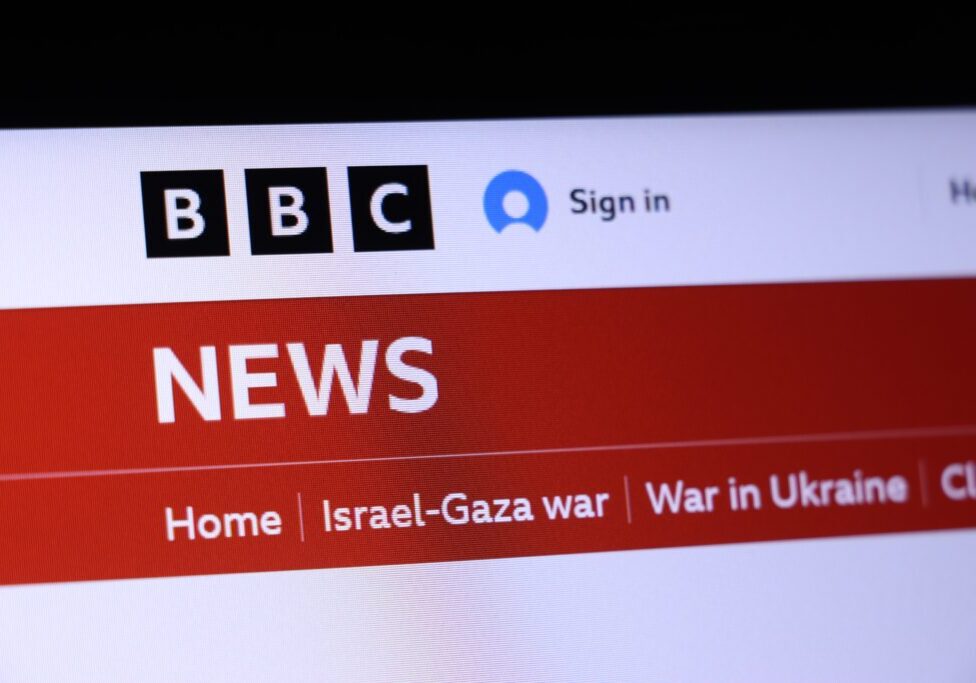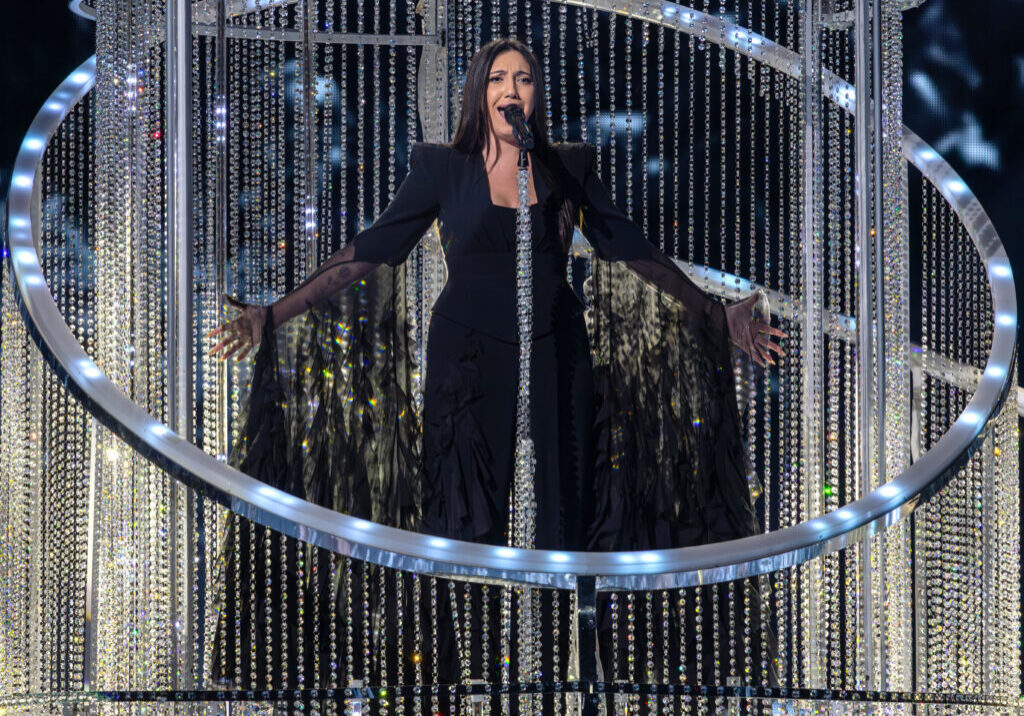Australia/Israel Review
Of Cartoons and Conspiracy Theories
Jan 30, 2015 | Paul Berman

Paul Berman
So there is a new issue of Charlie Hebdo, and the cover cartoon, by Luz, is a masterpiece. On a field of green, a white-turbaned and robed Prophet Muhammad, bug-eyed with horror, a giant tear falling on his cheek, holds a placard saying, “Je suis Charlie,” which is the same slogan that dominated the largest mass protest in the history of the nation that invented the phenomenon of mass protests. And above the cartoon Muhammad’s head are the words, “Tout est pardonné,” or, “All is forgiven.”
The cartoon is inspiring, moving, slightly mysterious, and entirely beautiful. It is inspiring because, in the face of the ultimate in terrorist pressure, the editors and cartoonists have chosen to go ahead and put the drawing on the cover. The cover of this week’s Charlie Hebdo is the most defiant newspaper cover in the history of journalism – a bolder cover even than the cover of the 1898 Paris newspaper that presented Zola’s article, J’Accuse (which, by non-coincidence, also bore on the question of what Zola called “imbecile anti-Semitism”). Zola knew that, by publishing his accusation against the enemies of Captain Dreyfus, he ran a danger of persecution, arrest, and imprisonment, but probably not murder. The editors, staff, cartoonists, printers, truck-drivers and kiosk vendors of Charlie Hebdo are in danger of murder. And they are unfazed.
The cover is slightly mysterious, at least in my eyes, because, looking at it, I am a little puzzled by the words, “All is forgiven.” Who is the speaker saying this? And who is being forgiven? It is not immediately obvious. Are these Prophet Muhammad’s words? If so, is he forgiving Charlie Hebdo for having insulted him in cartoons over the years? Is Muhammad forgiving the entire universe, terrorists included, out of a principle of all-embracing beneficence? Or, alternatively, do the words of forgiveness express the view of Charlie Hebdo itself, the newspaper, which forgives the weeping and innocent Muhammad for having the misfortune of being invoked by the nihilist madmen who have murdered the staff of Charlie Hebdo? The cover: is it an expression of mutual forgiveness, with Prophet Muhammad weeping in sorrow and proclaiming his solidarity with the newspaper, and the newspaper replying by forgiving everyone?
Luz, the artist, has indicated that this last interpretation is his own, and this ought not to be surprising. The interpretation conforms to the tradition of the paper. One of the most famous and controversial of Charlie Hebdo’s Muhammad cartoons in the past shows the prophet again in tears, dressed in black on that occasion and saying, “C’est dur d’être aimé par des cons…”, or, “It’s hard to be loved by some assholes…” Another of the famous cover cartoons shows Muhammad being beheaded by a black-masked fanatic under the caption, “If Muhammad returned…” Nor is the message of universal forgiveness foreign to the newspaper’s past. Still another of the famous covers, which ran a couple of years ago after Islamist extremists burned down the newspaper office, depicted a pencil-carrying Charlie cartoonist in a scandalously homosexual embrace with a bearded man in white Muslim dress, under the caption “Love is stronger than hatred.” (This slogan, too, appeared prominently in the “republican march” on Sunday.) But it is good that, on today’s cover, the words of forgiveness are not overtly attributed to anyone in particular. Uncertainty lends majesty.
The accusations that are thrown at Charlie Hebdo are a slander. I mean the accusations that Charlie Hebdo is a racist newspaper, has drifted to the reactionary right, and foments hatred for Muslims and immigrants. No, Charlie Hebdo’s cartoonists have repeatedly represented the Prophet Muhammad in a sympathetic light, and they have done so in order to draw a contrast with the Islamist fanatics – and, in this fashion, the cartoonists have instinctively made the right distinction. Today’s cover is merely the latest and most moving of the series, the most dignified, the most poignant, not to mention the most heroic. Muhammad weeping a giant tear – weeping because he is a man with a big heart who is overcome with sorrow at the stupid and bigoted murders.
Muhammad proclaiming “Je suis Charlie” – proclaiming his solidarity because he is a man of human sympathy, who identifies with the victims of terror. The elegance of the cartoon – the white and green, the lettering below and lettering above, the childlike naïveté of the drawing contrasted to the horror of the occasion – conveys a nobility.
I do not mean to suggest that Charlie Hebdo has displayed a piety toward Muhammad. A while back the newspaper ran a crude cartoon depicting Muhammad performing in a porno film – with the idea being, in that instance, to ridicule the Islamist riots and violence over a movie. To ridicule the Islamist movie riots was, however, a good thing to do. It was also a necessary thing to do. Some events are, after all, ridiculous, and what is ridiculous needs to be named, and the only way to name what is ridiculous is to ridicule it.
Charlie Hebdo is a pure product of the 1968-era radical left – anti-authoritarian, insurgent, impudent, indignant, mocking and self-mocking. The founding figures – François Cavanna (who died a few years ago), the artist Wolinski (who was murdered just now), and others – were fixtures of the ’68-era alternative press in Paris. They were the comrades of Sartre at his own journalistic enterprises. The surviving staff was able to bring out today’s issue because of the solidarity of the Paris newspaper Libération, which offered office space and aid a couple of years ago, when Charlie Hebdo’s offices were attacked, and did so again this week. And Libération did this because, in Paris, it, too, is the institutional product of the ’68 uprisings – even if, in Libération’s case, the decades have come and gone, and likewise the owners, and the newspaper is not entirely what it used to be. Still, historical memories persist, and also something of the old left-wing feistiness and comradeship. Incidentally, this is the corner of the French left that overlaps the most easily with the American left and counter-culture – with the Village Voice of long ago, which was the immediate inspiration for Libération, and with the American cartoons, among which Charlie Brown inspired Charlie Hebdo’s name.
How can it be, then, how is it possible, that a left-wing paper like Charlie Hebdo has just now been labelled as racist and reactionary? We are forever being told that to offer any visual image at all of the Prophet Muhammad is a terrible thing to do, oppressive to masses of people and disdainful of them, and is therefore a racist act – even when, as in the present instance, the visual image in question happens to be a defence of the Prophet Muhammad. (I note in passing the obscene quality of this accusation, under the present circumstance – the racist massacre of Jews merely because they were Jews.)
But is it so terrible, in fact, to depict the prophet? Really is it racist? It is true that pious Muslims who adhere to an old fashioned Sunni school of thought would never depict the prophet. Still, pious Muslims who adhere to other schools of thought do depict the prophet. An Islamic consensus on this point does not exist. In any case, the history of Western art does not adhere to pious Sunni traditions, and the history of ribald satire that descends from Rabelais does not adhere to any pious traditions at all.
Why has the issue become so controversial, then? The explanation ought to be obvious. Depictions of Prophet Muhammad have become controversial because, beginning with Ayatollah Khomeini in Iran in 1989 and his call to murder Salman Rushdie and his publishers, the Islamist movement has set out to impose its categories of analysis and judgment on the rest of the world. And the Islamists have enjoyed a massive success. The Islamists have set out to impose these categories on grounds that are positive (so to speak) and negative. The positive grounds add up to a chiliastic dream of imposing an Islamic caliphate on the entire world, which is an entirely mad idea; and a first step in the mad idea is to forbid people in the rest of the world from thinking thoughts that would be forbidden under the caliphate.
The negative grounds add up to a paranoid theory, which counts for a lot more than the dream of the caliphate. The paranoid theory is the belief that sinister forces in the West and among the Jews are conspiring to crush the Muslims and annihilate Islam. This theory is worse than mad: It is, in its consequences, criminal. Still, it is popular.
The belief in a vast anti-Islam conspiracy accounts for why so many Muslims around the world, having heard that in a far-away place somebody has drawn a picture of the prophet, respond so furiously. The existence of a cartoon is taken to be evidence of the diabolical conspiracy. And the same paranoid theory accounts for the desire to massacre the Jews. The accusation against the Jews goes far beyond saying that Zionists have stolen Palestinian land or have bombed Gaza or in other ways have wronged the Palestinians.
The Jewish crime, paranoically conceived, is not a local crime, nor a recent crime. The belief is that, beginning in the 7th century, Jews have been conspiring to destroy Islam. The crime is cosmic. And the Jews must be destroyed in turn. That is why, to the terrorists, it does not matter whether their Jewish victims are infants, as in the Toulouse murders, or museum-goers, as in Brussels, or grocery shoppers, as in Paris.
The paranoid theories account for the genuine popularity of the terrorists in some of the French Arab neighbourhoods. There are people who would never dream of becoming terrorists or jihadis, but who nonetheless feel in a vague way that sinister forces are conspiring against Islam, and who are therefore bound to look upon the jihadis as sympathetic rebels. And there are people who are bound to feel intimidated by the climate of violent jihadi opinion around them.
Terrorism directed against “the other” is always a pressure directed at one’s own population. And the popularity of these thoughts naturally spread outward to neighbourhoods of well-meaning people, Muslim and non-Muslim, who are impressed and frightened by Islamism’s rise and who look for ways to adapt and accept, and end up repeating to themselves one or another of the Islamist claims – especially the claim that Muslims are the victims of a terrible and overbearing bigotry.
Acting on these impulses, the well-meaning people begin to tell themselves that anti-obscurantist protests, which used to be progressive, are now reactionary – leftism is rightism; and rightism is leftism. The well-meaning people shake their heads in sorrow at the murders of various people, and, even so, convince themselves that to publish a cartoon defending Prophet Muhammad must surely be a terrible act of anti-Muslim racism. And the well-meaning people remind themselves that, even if the Jewish shoppers in a Paris grocery store are not directly guilty, there are other Jews, thousands of miles away, who are certainly guilty of terrible crimes, and therefore the racism that we should worry about is the racism directed at co-religionists of the perpetrators of the racist massacre.
That is where we find ourselves today. It is an enraging situation. It is horrifying. It is also an extravaganza of ideas and doctrines that are ridiculous. What is ridiculous needs to be ridiculed. I am Charlie.
Paul Berman writes about politics and literature for various magazines. He is the author of A Tale of Two Utopias, Terror and Liberalism, Power and the Idealists, and The Flight of the Intellectuals. This article is reprinted from Tablet Magazine, at tabletmag.com, the online magazine of Jewish news, ideas, and culture. © Tablet Magazine, reprinted by permission, all rights reserved.
Tags: Europe






